- Home
- William Shakespeare
King John & Henry VIII Page 15
King John & Henry VIII Read online
Page 15
Indeed, the part of Constance, which Sarah Siddons so relished because of the emotional range she saw in it,16 has proved highly problematic for actresses ever since, since to play this role has meant risking the double bind either of being accused of “hysterical grief,” as in Julia Neilson’s case, or of lifeless understatement of the poetic force of the language. In Douglas Seale’s 1957 Stratford production, Joan Miller attempted to play the role with less emphasis on Constance’s ranting tirades and greater depth given to her “latent psychosis.” The result was generally not well received, with the Daily Telegraph reviewer remarking, for example, that she “conveyed little more than that she was rather cross.”17 On the other hand, Susan Engel in Deborah Warner’s 1988 RSC production and Claire Bloom in David Giles’s 1984 BBC production were both apparently successful in rendering Constance acceptable to a late-twentieth-century audience by playing the part relatively calmly, and effectively questioning whether Constance is actually crazed at all.18 This impression appears to be confirmed by contemporary reviews, so that, for example, Irving Wardle in The Times praised Susan Engel for rendering “the almost unplayably formalized rhetoric into living speech.”19
However, the Giles and the Warner productions shared an important feature: intimacy with the audience. The Giles production, being for television, allows full-face close-up photography and audible amplification of quiet delivery. Similarly, The Other Place, where Warner mounted her live production, was the smallest and most intimate of all of the RSC’s Stratford theaters of the time, and allowed only a tiny audience, which was forced to sit in close proximity to the actors. This suggests that playing Constance successfully in a more restrained fashion accessible to a modern audience requires such intimacy.
1. 1957, Douglas Seale production. Joan Miller attempted to play the role with less emphasis on Constance’s ranting tirades and greater depth given to her “latent psychosis.”
Of the two 2001 productions, the critical reception of the Northern Broadsides’ Constance suggested that the figure was still not quite at home in the early-twenty-first-century theater, with Charles Spencer in the Daily Telegraph opining that Northern Broadsides’ “Marie Louise O’Donnell is so stridently histrionic as the grieving Constance … that she entirely fails to touch the heart with some of the most poignant and potent poetry in the play,”20 while Kate Bassett in the Independent was even more trenchant: “Marie Louise O’Donnell is ludicrous as the pretender’s mother, swishing around like a furious, punctured balloon.”21 Playing Constance in a cooler, more psychoanalytic fashion acceptable to modern audiences requires a realistic, perhaps cinematic acting style that may appear excessively understated unless it is presented in an intimate theater setting, or indeed on film. More generally, complaints about the declamatory nature of the play are rife in the criticism of live performances in the twentieth century, suggesting a reason for its lack of popularity. Thus, a contemporary reviewer of the 1957 Old Vic production commented: “No-one in King John ever speaks. They all declaim.”22
The play’s popularity during the early to mid-nineteenth century was also due in some measure to the development in English culture of a taste for extreme historical—indeed “archaeological”—accuracy in the treatment of the subject matter of drama, combined with the spectacular use of costume, stage effects, and supernumeraries. The Shakespeare productions of, in particular, Charles Kemble, William Charles Macready, and Charles Kean, presented costumes and settings that were heavily researched on the basis of scholarship, historical documents, funerary sculpture, and so on. They typically used literally hundreds of supernumeraries in battle scenes and culminated in spectacular final scenes. In part, this trend was commercially based: faced with increasing competition from the nonpatent theaters with their pantomimes and burlesques, the patent theaters had begun in the early nineteenth century to look for new ways to draw the crowds, and so “for all their pieties about only playing the classical repertoire—no burlettas or performing dogs—they relied more and more on ‘low’ spectacle.”23
More generally, however, there developed in the mid to late nineteenth century a love of the spectacular, alongside the widespread availability of inventions such as the magic lantern and the stereoscope, paralleled on a grander scale by huge, walk-in, three-dimensional panoramas and dioramas that were popular in London until at least the end of the third quarter of the nineteenth century. Thus, toward the end of William IV’s reign, and certainly by the beginning of the second decade of Victoria’s (as witnessed by the Great Exhibition in 1851), the English were accustomed first to grandeur and ostentation in their architecture and domestic furniture, and second to looking at the world through pictures rather than through the use of imagination. Thus, the love of the spectacular in the theater, which combined both of these elements, was simply one manifestation of a more general phenomenon in English society.24 King John lent itself well to the pictorial treatment that could be meted out in lavish, spectacular productions, since the very “serial discontinuity”25 of its episodic structure, together with its medieval subject matter made it ideal for a theatrical magic lantern show that would bring in the crowds. James Robinson Planché, historical advisor to Charles Kemble’s 1823 Covent Garden production, recalls with satisfaction the opening night performance:
When the curtain rose, and discovered King John dressed as his effigy appears in Worcester Cathedral, surrounded by his barons sheathed in mail, with cylindrical helmets and correct armorial shields, and his courtiers in the long tunics and mantles of the thirteenth century, there was a roar of approbation, accompanied by four distinct rounds of applause.26
In Macready’s 1842 Drury Lane production, in addition to recovering the painstaking historical researches of Planché to inform the costume design, fourteen intricate, massive, highly researched painted sets were designed by William Telbin, and huge numbers of supernumeraries were employed.27 There were fifty-nine persons on stage in the opening scene of the play, as opposed to the six mentioned in the stage directions of the 1623 Folio.28 Charles Kean’s productions at the Princess’ Theatre in 1852 and 1858 followed suit and upped the bidding in terms of historical accuracy, so that the throne room in Act 1 Scene 1, for example, was an exact replica of the hall in Rochester Castle; Kean also made use of large numbers of supernumeraries and used Macready’s promptbook to inform his stage directions.29
By the time of Tree’s 1899 production, however, tastes were beginning to shift again, and may have been given a helping hand by Tree’s excessive archaeological-spectacular extravaganza. In an effort to outdo the previous spectacular productions of Kemble, Macready, Phelps, and Kean, Tree included highly researched costumes designed by Percy Anderson, sumptuous sets, vast numbers of supernumeraries, and not only a Magna Carta tableau introduced by Kean but also a further fifteen tableaux (with a resulting significant cut in the text). The walls of Angiers were complete with massive Norman archways, a moat, battlements, crenellated parapet walls, corbels, and, in the distance, a faithful painted representation of the medieval chateau of Angiers.30 Tree’s production was distrustful of the text, reliant on props rather than acting conviction, and sentimental. As such, it contradicted virtually all of the precepts of modern theater as they were emerging at the turn of the nineteenth century: overemphasis of archaeological realism was increasingly coming to be seen as artifice and the spectacular as form without content.
Other theatrical trends were also afoot in the early twentieth century which prejudiced against the continuation of the spectacular, most noticeably the rise of the repertory system.31 Since the basis of the repertory system was a move away from “commercial drama” toward a smaller, more experimental mode of theatrical production, there was no place at all for the high Victorian mode of the spectacular. King John’s episodic nature was now a theatrical handicap as the focus of attention shifted from exterior picture show to a more restrained and austere style. Freed from the shackles of historical realism and the distractions of the s
pectacular, the English theater of the early twentieth century moved toward a greater concentration on the inner coherence of the play and of its characterization.
Absence of any reference to the two things a modern spectator can be guaranteed to know about King John: his legendary relationship with Robin Hood and his signing of Magna Carta at Runnymede in 1215 seem like glaring dramatic omissions today. Shakespeare died twelve years before the 1628 Petition of Right and over sixty years before the 1679 Habeas Corpus Act, each of which looks directly back to clause 39 of the charter of 1215.32 Most importantly, however, Shakespeare could not have known that, within thirty years of his death, England would be plunged into a bloody civil war that was effectively a dispute over the significance of the document, or that the sentiments and even the language of Magna Carta would be used in framing the state and national constitutions of the United States a century and a half later. Palmer sums it up pithily: “As for Magna Carta, the Elizabethans had never heard of it.”33 It is noteworthy that both Kean and Tree should have felt the need to insert the signing of Magna Carta into their nineteenth-century productions in the form of tableaux, although the decline in taste for the dramatic spectacular and the general upward trend in respect for the original text during the twentieth century have not allowed this expedient solution. It seems likely that the lack of reference to Magna Carta has contributed to the play’s decline in popularity.
2. 1899, Herbert Beerbohm Tree’s production, with Tree himself as John. Tree included highly researched costumes designed by Percy Anderson, sumptuous sets, and vast numbers of supernumeraries.
While the absence of any reference to Magna Carta is relatively easy to understand, the lack of any reference to Robin Hood is more puzzling, since there was already a strong popular tradition of Robin Hood plays in the Tudor period.34 A story about noble outlaws with a reputed link to good King Richard would seem to be prime material for the play’s themes of integrity, legitimacy, and kingship, and, moreover, the material would have been well known to Shakespeare’s audience: Robin Hood featured in a large number of popular ballads during the medieval and English Renaissance periods.35 In the last years of the sixteenth century, moreover, there appeared a spate of London plays involving the outlaw, thus demonstrating his popularity with Elizabethan London playgoers but, much to the modern theatergoer’s disappointment, there is no reference to Robin Hood in King John.
This brief history has outlined the remarkably varying stage popularity of King John but not discussed in any detail the play’s political elements, which become important during the twentieth century, in particular in a number of the Royal Shakespeare Company productions of the play, to which we now turn.
AT THE RSC
In 2011, the Royal Shakespeare Company celebrated its fiftieth anniversary and marked the event by opening a major extension and refurbishment of the Royal Shakespeare Theatre. While the new RST is boldly forward-looking in its design, it intellectually links with the past both through its apron stage, which harks back to the theaters of Shakespeare’s day, and through its brave new tower, homage to the 1879 Shakespeare Memorial Theatre, which stood on an adjoining site before much of it burned down in 1926. It also physically links with the past by conspicuously combining with, rather than replacing, Elizabeth’s Scott’s elegant 1932 art deco building and by sharing the front-of-theater space in the new RST with the vestiges of the 1879 theater, which, refurbished in 1926, now form the RSC’s Swan Theatre. Within this new theater complex, forward-looking but rooted in the past as it is, lies a clue to understanding the shifting stage fortunes of Shakespeare’s play, King John.
If a present-day visitor to the RST turns right at the main entrance and skirts the outside of the theater on the west side to come to the Waterside entrance to the Swan, opposite Chapel Lane, and looks up and to the left of the entrance, they will see three stone gothic arches, within each of which is a terra-cotta relief panel. These panels were commissioned and installed in 1885 and survived the disastrous fire of 1926; each depicts a scene from a Shakespeare play, chosen to represent one of the three main genres of the Shakespeare canon, namely comedy, history, and tragedy. The left panel depicts what is clearly a woman in man’s clothing standing in a leafy forest, while the right panel depicts a man standing by a graveside staring at a human skull in his hand: our present-day RST visitor, equipped with only a passing knowledge of the most popular plays, is quite likely to identify the first figure as Rosalind disguised as Ganymede and the second as the Danish Prince: As You Like It and Hamlet would still today be sensible choices to represent Shakespeare’s comedies and tragedies. But how many present-day theatergoers—or English literature scholars for that matter—would immediately recognize the central panel as depicting the boy Arthur’s moving plea to Hubert not to put out his eyes in Act 4 Scene 1 of King John? Certainly, our Shakespeare-loving visitor is likely to shake his head in puzzlement; how the mighty are fallen.
The fact that in 1885 the Shakespeare Memorial Association chose King John as one of three plays to commemorate on the façade of its new theater, and as the single play to represent Shakespeare’s histories, says something important about how the play was regarded at that time. However, equally telling about how it was regarded during the second half of the twentieth century is the fact that the Royal Shakespeare Company did not produce King John from the date of the ensemble’s foundation in 1961 until nearly a decade later in 1970, while both As You Like It and Hamlet were produced in the RSC’s inaugural season and had been produced at Stratford a total of three and four times, respectively, by 1970.
The 1970 production, directed by Buzz Goodbody, and the 1974 production, directed by John Barton, each departed significantly from the text,36 although Deborah Warner’s experimental 1988 production returned to an uncut and unadapted text. The RSC next staged it in 2001, directed by Greg Doran, and then again, as part of the Complete Works Festival in 2006, directed by Josie Rourke. A common feature that unites the RSC productions is the modern political relevance of the play. Much of the play’s language appears to be borrowed or adapted from contemporary Elizabethan political anti-Catholic pamphlets. A further political aspect of the play is its general warlike tone, especially toward that perennial enemy of the English, the French. This, together with what audiences and reviewers have perceived as the play’s patriotic message, has generally increased its popularity in time of war.37
Buzz Goodbody’s 1970 “Theatre-go-round” production, which toured schools and community centers around the country, as well as being performed at the RST, was a much simplified, pared-down version of the play. Goodbody took an extreme satirical line by presenting the main characters as shallow and childlike as they charge around the stage, frequently shifting their positions and allegiances, cheerfully indifferent to the carnage they are wreaking. Patrick Stewart’s John was, in particular, presented as a childish character taking an irresponsible, whooping glee in the political process. The Goodbody production received some support from contemporary reviewers, with Hilary Spurling in the Spectator, for example, arguing that the childlike presentation of the play and deliberate artificiality of the production revealed the futile nature of war and grand politics by likening them to the cruelty and recklessness of children’s games, a world in which entire battalions are cheerfully and “boisterously slaughtered between one line and the next.”38 However, a number of contemporary reviewers suggested that the play owed as much to A. A. Milne (quoting Milne’s Now We Are Six poem about King John) as to W. Shakespeare. Benedict Nightingale, in the New Statesman, for example, suggested that Patrick Stewart’s John was “a sort of perverted Tigger” in a world in which “War is a hilarious trip to the seaside, and [the nobles] giggle and nudge one another as they prepare to knock down the sandcastles of Angiers. Push, kick, stamp, and then back home for tea.”39 Even more trenchantly, another influential reviewer argued that it was “a pity that this production of King John took place at all. Its flippancy was ill judged and o
ften puerile. Buzz Goodbody … imposed on [the play] a single simplified view of politics as a dangerous game incompetently played by caricature kings and councillors who can give and take a giggle but defy respect.”40
3. 1970, Buzz Goodbody’s “Theatre-go-round” production. Patrick Stewart’s John was, in particular, presented as a childish character taking an irresponsible, whooping glee in the political process.
While Goodbody’s production was simplified and pared down, John Barton’s 1974 RSC production was largely rewritten and incorporated two other plays about King John. In the 1974 programme, Barton explained why:
Whenever I have seen King John on the stage I have been fascinated yet perplexed. When I read it again … I was struck by how much the play … is about England and us now.… Even the specific political issues have modern parallels, although I have never seen this emerge fully in performance. So I turned to The Troublesome Reign of King John … and to the Tudor King Johan for clues as to why.…
Barton in fact also added lines of his own and cut and transposed Shakespeare’s text, as well as interpolating additions from the two other plays. In addition, in production he added a number of visual cues that were meant to illustrate and clarify the narrative. Barton also inserted a number of contemporary political references, including one to the high 1970s inflation rate (“… the price of goods / Soars meteor-like into the louring heavens / Whiles that our purses dwindle and decline”), although many of these were removed when the production transferred to London the following season, presumably in response to adverse reviewers’ comments. Indeed, Barton’s adaptation was generally not well received by the critics. Partly this was indignation at Barton’s perceived temerity in assuming he could improve on Shakespeare, with the Observer, for example, noting that “This year’s season at Stratford on Avon began on Wednesday with William Shakespeare’s King John. So, at least, declared the programme, thereby exposing the Royal Shakespeare Company not merely to criticism, but to possible prosecution under the Trades Descriptions Act.”41 But even reviewers who were willing to entertain the adaptation did not generally applaud Barton’s work. Robert Smallwood, for example, notes that while Barton was attempting to make the play more accessible to a modern audience, “the man who joins together what Shakespeare left asunder and attempts simultaneously to produce three plays is in serious danger of losing the individual focus of them all together in a general blur.”42 A similar criticism was made by Peter Thomson, who has varied praise for the individual performances but, in words reminiscent of Nightingale’s comments on Patrick Stewart’s interpretation of the same character in the Goodbody production, argues that Emrys James’s John was presented as a particularly annoying “nursery king, a mother’s boy without an inkling of adult responsibility.”43 The central political message of the Barton production, however, was that of a fatalistic decadence.

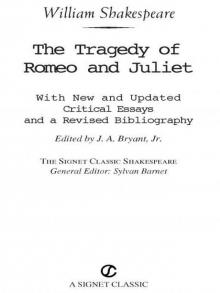 Romeo and Juliet
Romeo and Juliet As You Like It (Folger Shakespeare Library)
As You Like It (Folger Shakespeare Library)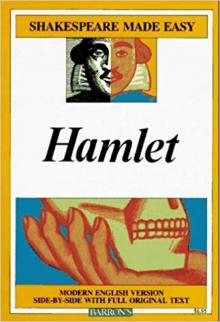 Hamlet
Hamlet Richard II (Folger Shakespeare Library)
Richard II (Folger Shakespeare Library)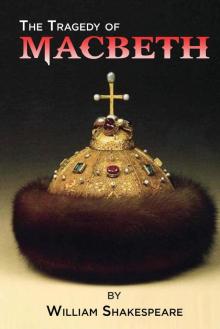 Macbeth
Macbeth Henry V
Henry V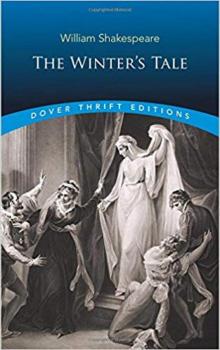 The Winter's Tale
The Winter's Tale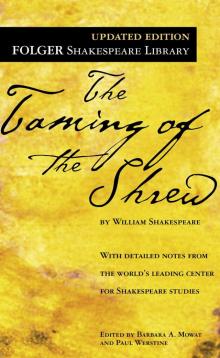 The Taming of the Shrew
The Taming of the Shrew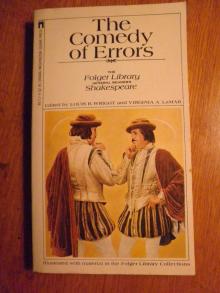 The Comedy of Errors
The Comedy of Errors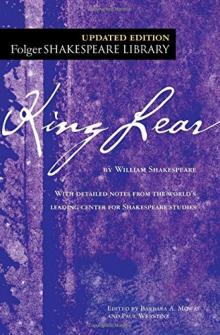 King Lear (Folger Shakespeare Library)
King Lear (Folger Shakespeare Library)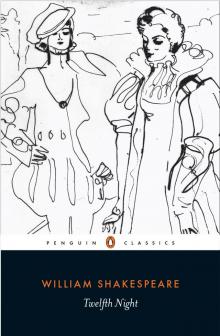 Twelfth Night
Twelfth Night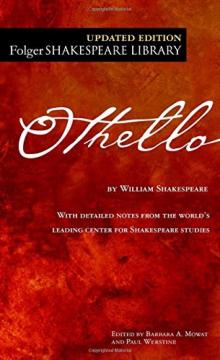 Othello
Othello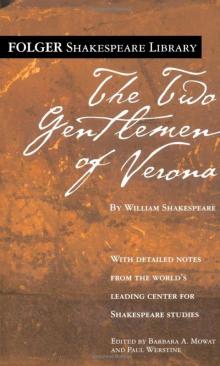 The Two Gentlemen of Verona
The Two Gentlemen of Verona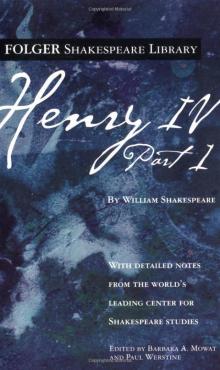 Henry IV, Part 1 (Folger Shakespeare Library)
Henry IV, Part 1 (Folger Shakespeare Library) King John/Henry VIII (Signet Classics)
King John/Henry VIII (Signet Classics)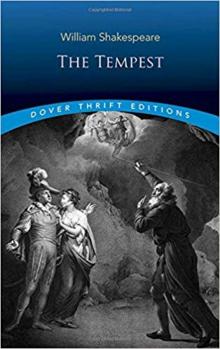 The Tempest
The Tempest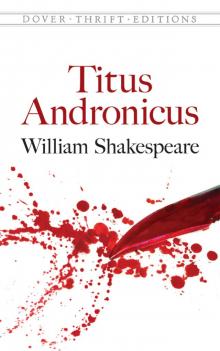 Titus Andronicus (Dover Publications)
Titus Andronicus (Dover Publications)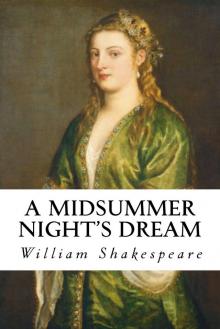 A Midsummer Night's Dream
A Midsummer Night's Dream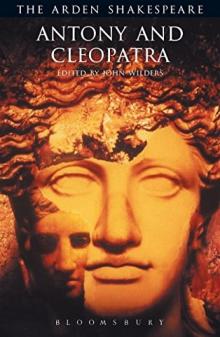 Antony and Cleopatra (Arden Shakespeare: Third Series)
Antony and Cleopatra (Arden Shakespeare: Third Series)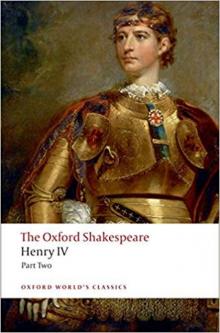 The Oxford Shakespeare: Henry IV, Part 2 (Oxford World's Classics)
The Oxford Shakespeare: Henry IV, Part 2 (Oxford World's Classics)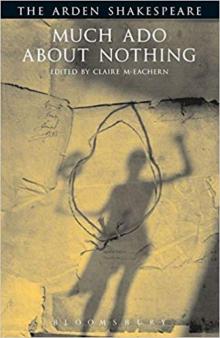 Much Ado About Nothing (Arden Shakespeare: Third Series)
Much Ado About Nothing (Arden Shakespeare: Third Series)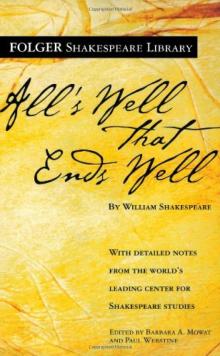 All's Well That Ends Well
All's Well That Ends Well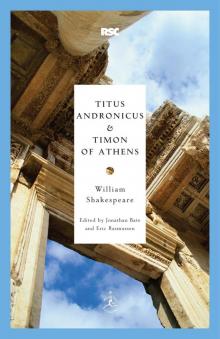 Titus Andronicus & Timon of Athens
Titus Andronicus & Timon of Athens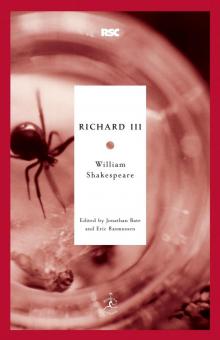 Richard III (Modern Library Classics)
Richard III (Modern Library Classics) Coriolanus
Coriolanus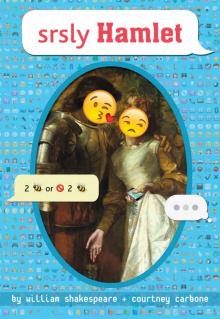 srsly Hamlet (OMG Shakespeare)
srsly Hamlet (OMG Shakespeare) The Merchant of Venice
The Merchant of Venice Richard III
Richard III Richard II
Richard II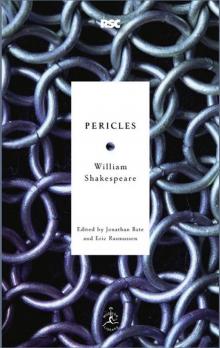 Pericles
Pericles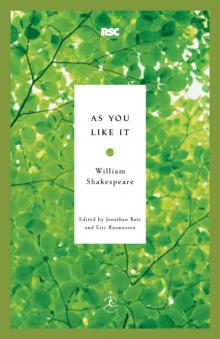 As You Like It
As You Like It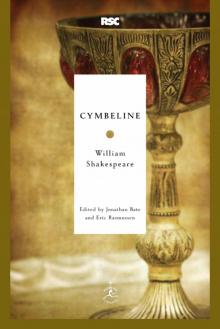 Cymbeline
Cymbeline Alls Wel that ends Well
Alls Wel that ends Well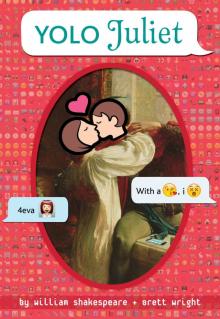 YOLO Juliet
YOLO Juliet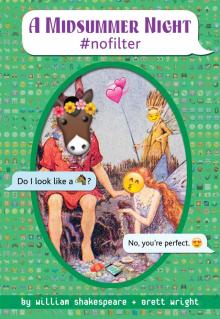 A Midsummer Night #nofilter
A Midsummer Night #nofilter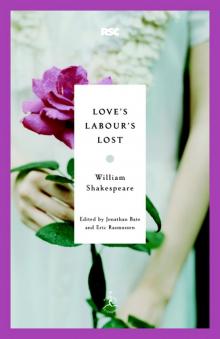 Love's Labour's Lost
Love's Labour's Lost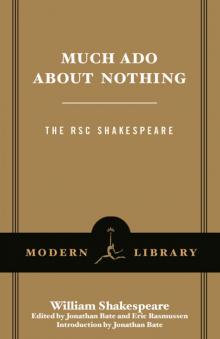 Much Ado About Nothing
Much Ado About Nothing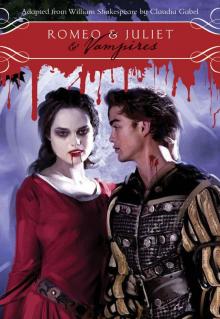 Romeo & Juliet & Vampires
Romeo & Juliet & Vampires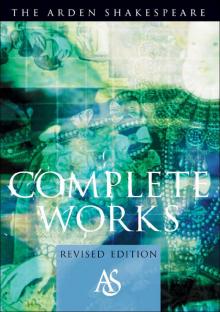 The Arden Shakespeare Complete Works
The Arden Shakespeare Complete Works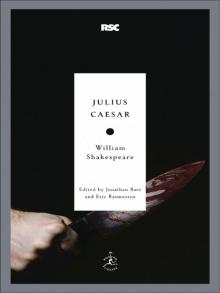 Julius Caesar
Julius Caesar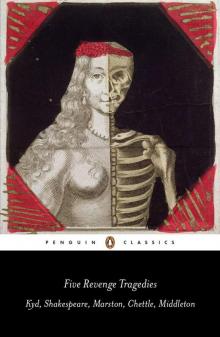 Five Revenge Tragedies: The Spanish Tragedy, Hamlet, Antonio's Revenge, The Tragedy of Hoffman, The Revenger's Tragedy (Penguin Classics)
Five Revenge Tragedies: The Spanish Tragedy, Hamlet, Antonio's Revenge, The Tragedy of Hoffman, The Revenger's Tragedy (Penguin Classics)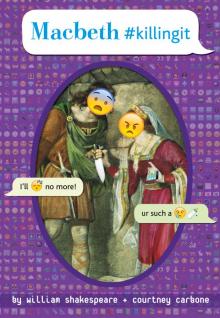 Macbeth #killingit
Macbeth #killingit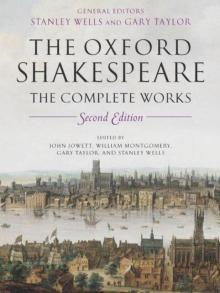 The Oxford Shakespeare: The Complete Works
The Oxford Shakespeare: The Complete Works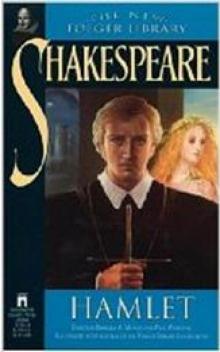 Hamlet, Prince of Denmark (Collins edition)
Hamlet, Prince of Denmark (Collins edition)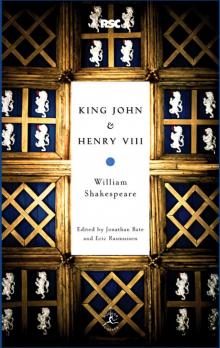 King John & Henry VIII
King John & Henry VIII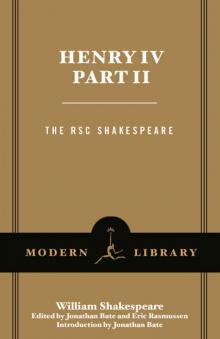 Henry IV, Part 2
Henry IV, Part 2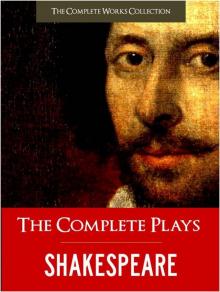 Complete Plays, The
Complete Plays, The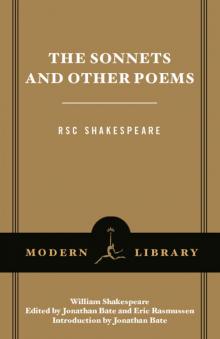 The Sonnets and Other Poems
The Sonnets and Other Poems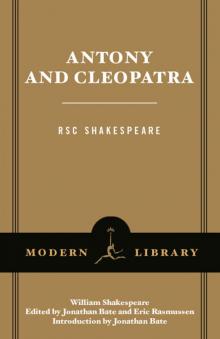 Antony and Cleopatra
Antony and Cleopatra Henry IV, Part 1
Henry IV, Part 1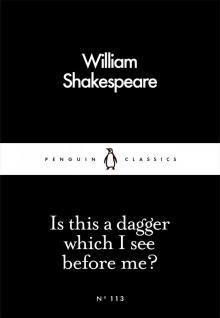 Is This a Dagger Which I See Before Me?
Is This a Dagger Which I See Before Me? The Complete Works of William Shakespeare In Plain and Simple English (Translated)
The Complete Works of William Shakespeare In Plain and Simple English (Translated)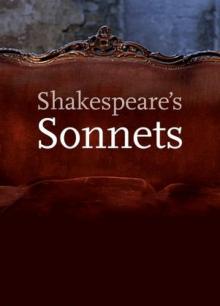 The Sonnets
The Sonnets